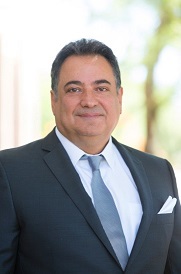Roughly 200 million Americans—about 79 percent of the population—own a smartphone, comScore says. Since 2010, the amount using those devices to follow political campaigns on social media has more than doubled to almost one third of registered voters, according to Pew Research Center.
Those figures highlight why savvy campaigns are increasingly mining unstructured data from social media sources. In fact, by some estimates only about 10 percent of social media data is structured, such as likes and dislikes, age, occupation and location. But analytics tools are becoming increasingly sophisticated, making it possible for campaigns to start utilizing the other 90 percent.
Not surprisingly, social media data can be particularly valuable for developing strategies to better understand and influence younger voters. For example, Pew’s research shows that in the 2014 midterm election, 21 percent of voters ages 30-49 were following candidates on social media, up from 6 percent in 2010. That usage is on par with that of voters ages 18-20.
Research also shows that smartphone usage is high across all races: 87 percent for Asians, 85 percent for African Americans, 83 percent for Hispanics and 77 percent for Caucasians, according to Nielsen’s Total Audience Report. That’s another example of why political strategies cannot afford to overlook social media’s mobile aspects.
Behavioral and other unstructured data from social media can be used in a variety of ways, such as determining the most appropriate ad to serve to each user. For example, someone who’s posted about jobs would receive an ad about the candidate’s job creation platform instead of an ad about, say, climate change. This relevance helps condition people to pay attention to political ads instead of simply tuning them out.
New Risks Abound
Campaigns mine unstructured social media because it is a fresh source of valuable insights. However, that value means they need to protect the data—advice that seems obvious, but is all too often ignored.
One reason is because most candidates are not digital natives and thus do not understand all of the vulnerabilities. Hillary Clinton’s email server scandal is a case in point.
For example, campaigns should encrypt all of their staff’s mobile phones and all of the communications that those devices enable, including text messaging. Also, consider hiring security experts to ferret out vulnerabilities that even digital natives overlook or underestimate.
Campaigns also should archive all digital communications, like text messages. Even if current laws may not universally require archiving, it is still a smart move if a false social media attack occurs. Those records could exonerate a candidate—and thus keep his or her political career intact.
Another challenge is determining when unstructured social media is being manipulated. For example, Enrique Peña Nieto won the Mexican presidency in 2012, but he is now under suspicion related to social media manipulation. Andres Sepúlveda—sentenced to a decade in prison for using malicious software, criminal conspiracy, identity theft and espionage, all for a Colombian election job—claims he used technology to influence political campaigns and traveled the continent rigging major campaign outcomes. Sepúlveda says the Peña Nieto job was his most complex, with a budget of $600,000.
Sepúlveda discovered that people believe what they read online, so he created over 30,000 Twitter bots to boost online discussions. He would fabricate rumors, which is not a new tactic in political campaigns. But his rumors were discussed by 30,000 Twitter bots, prompting a lot of real people to pick them up, which led to other social media posts. The news media would pick up the rumor because millions of people were discussing it.
Sepúlveda also set up fake social media pages to show support for his candidate or the opponent, depending on the issue. For example, he created the appearance of massive support for a candidate by groups with unsavory ties and agendas.
Sepúlveda says he is 100 percent certain that U.S. campaigns use these and other tactics to manipulate social media. How can ethical candidates protect their reputation and thus their election chances? One way is by analyzing unstructured social media to identify false rumors as they emerge. That way, candidates can refute them before they build enough momentum to start undermining their campaign.
All of this is a lot to think about, of course. But it’s also the new, inescapable reality and sometimes fabricated reality of modern politics.
 Contributed by: Sean Moshir, Co-founder, Chairman and CEO of CellTrust, a leading provider of secure mobile communication for global enterprises. As a cybersecurity authority over the last 20 years, Sean has led several industry-changing security technology initiatives and has received multiple awards and recognitions. Sean truly envisions a world where the mobile device is crucial to validating identity, and passionately advocates CellTrust’s core mission to providing an intelligent environment for the trusted and convenient exchange of relevant, highly confidential, high-risk, enterprise or personal data. Over the last decade, he has attracted over $40 million USD in investment and venture capital. Sean has additionally received national recognition from industry and business publications, such as Network World, Network Computing, Software Magazine, IT Security, The Wall Street Journal and Forbes.
Contributed by: Sean Moshir, Co-founder, Chairman and CEO of CellTrust, a leading provider of secure mobile communication for global enterprises. As a cybersecurity authority over the last 20 years, Sean has led several industry-changing security technology initiatives and has received multiple awards and recognitions. Sean truly envisions a world where the mobile device is crucial to validating identity, and passionately advocates CellTrust’s core mission to providing an intelligent environment for the trusted and convenient exchange of relevant, highly confidential, high-risk, enterprise or personal data. Over the last decade, he has attracted over $40 million USD in investment and venture capital. Sean has additionally received national recognition from industry and business publications, such as Network World, Network Computing, Software Magazine, IT Security, The Wall Street Journal and Forbes.
Sign up for the free insideBIGDATA newsletter.




Speak Your Mind